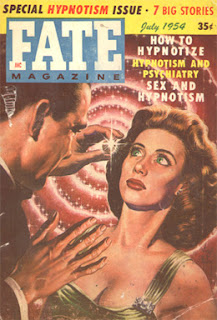Forgotten feticisms, a New York Times art reporter and Cinquevalli unexpectedly materialized.

Soon or later the priest of peculiar performers’ paraphernalia preservation had to land on our blog. And we have no doubt that each one of our visitors is more than instructed on who is Ricky Jay. And that most of them know about each one of his literary feats, including the last, “Extraordinary Exhibitions”, that is also an exhibition in itself.Recently display ed at Hammer Museum in Los Angeles, the show stimulated art critic Michael Kimmelmann at New York Times, who confirmed our feticist fascination for the handbills and their legitimation as part of the art family.
ed at Hammer Museum in Los Angeles, the show stimulated art critic Michael Kimmelmann at New York Times, who confirmed our feticist fascination for the handbills and their legitimation as part of the art family.
He writes: “ handbills must have been appreciated, or else they landed by mistake in a pile on someone’s desk or inside someone’s library, as bookmarks, avoiding leaky roofs, small children with soiled hands and generations of tidy owners, to transmute into prized artifacts that passed to the antiquarian market, from which Mr. Jay, a century or two or three after they were printed, acquired them”.
The reporter continues: “art works that way. It can turn up, unexpectedly, and once you see it, you can’t imagine how you missed it in the first place. The art is there in the worn, throwaway sheets, dog-eared or tattooed with the rusty imprints of paper clips(...). Art is also about what’s inexplicable and out of the ordinary. Painting is the world’s oldest conjuring act, colored dirt smeared on a flat surface to create an illusion. We may know it’s not real, but we still enjoy seeing how the magic is done”. To finish: “life was just as rich and perverse centuries ago, and people delighted in the bizarre and subversive, just as we do. It’s history that sanitizes the past, makes order out of chaos”.
One of the extraordinary performers displayed in Mr.Jay’s playbills announces german juggler Paul Cinquevalli. Who is likely the only of them whose extraordinary exhibition survived the sanitized past: crossing the path of the cinematographer, he was able to leave us a microscopic trace of his feats. This doesn’t have the allusive and enigmatic fascination of the playbills, but at least guarantees us for few second the magnetic amazement of a forever gone live performance.  So, please, come forward and appreciate it by the words of Mr.Jay himself: “Paul Cinquevalli was unquestionably the most famous juggler of his day. And on the first Royal Command Variety Show in 1912, he appeared before King George and Queen Mary on a bill with the most famous vaudeville artists in the world.
So, please, come forward and appreciate it by the words of Mr.Jay himself: “Paul Cinquevalli was unquestionably the most famous juggler of his day. And on the first Royal Command Variety Show in 1912, he appeared before King George and Queen Mary on a bill with the most famous vaudeville artists in the world.
“This is an unusual broadside because of the distinctive type being placed on the diagonal instead of a more traditional format. It calls Paul Cinquevalli ‘The King of the Cannonball,’ and he did a number of stunts in which he caught cannonballs with his neck and balanced them in various poses.
“But perhaps he was more famous still for being called ‘The Human Billiard Table.’ In a tight-fitting costume, he had a number of pockets placed in specific pouches and he was able to roll balls across his neck and shoulders making them land in the pockets of his choice.
“He was so famous at this time that it was said that his name and fame as a juggler is a household world throughout the universe …”















 n by ZPR, a central organization ruling a school, five large big tops around the country and thousands of performers in the world. My circus childhood is scattered by exceptional Polish tumblers, jugglers, animal trainers that after winning awards in Monte Carlo or spending seasons in Usa w
n by ZPR, a central organization ruling a school, five large big tops around the country and thousands of performers in the world. My circus childhood is scattered by exceptional Polish tumblers, jugglers, animal trainers that after winning awards in Monte Carlo or spending seasons in Usa w




























